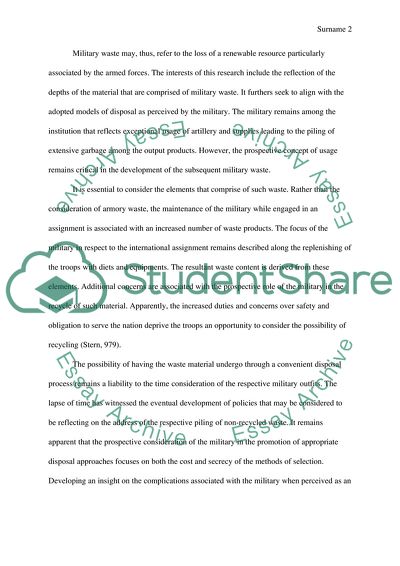Cite this document
(US Military Safe Disposal of Waste Products Research Paper, n.d.)
US Military Safe Disposal of Waste Products Research Paper. https://studentshare.org/environmental-studies/1853049-us-military-waste-and-the-affects-on-the-environment-as-well-to-consumers-from-a-monetary-standpoint
US Military Safe Disposal of Waste Products Research Paper. https://studentshare.org/environmental-studies/1853049-us-military-waste-and-the-affects-on-the-environment-as-well-to-consumers-from-a-monetary-standpoint
(US Military Safe Disposal of Waste Products Research Paper)
US Military Safe Disposal of Waste Products Research Paper. https://studentshare.org/environmental-studies/1853049-us-military-waste-and-the-affects-on-the-environment-as-well-to-consumers-from-a-monetary-standpoint.
US Military Safe Disposal of Waste Products Research Paper. https://studentshare.org/environmental-studies/1853049-us-military-waste-and-the-affects-on-the-environment-as-well-to-consumers-from-a-monetary-standpoint.
“US Military Safe Disposal of Waste Products Research Paper”. https://studentshare.org/environmental-studies/1853049-us-military-waste-and-the-affects-on-the-environment-as-well-to-consumers-from-a-monetary-standpoint.


